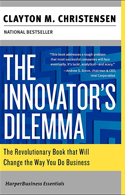
Living in a corporate apartment in the SOMA district of San Francisco is pretty glamorous. Cheerios, bottled pasta sauce, a coffee percolator and a laptop on the couch. Still, it’s quite a good experience and I have enjoyed the feeling of being amongst it all. Luckily I actually still get a wage from a company that is doing better than break-even, so I guess I’m not really living the start-up lifestyle.
Meetings happen faster here, you don’t have to think about timezones and languages so much and you can talk to product face to face if you don’t agree with their direction. These are things that are easy to take for granted if you work in the US. On the flip side the diversity and distance challenges in APAC make it an incredibly exciting area to be working in.
It would be nice to have the best of both worlds, but not sure when or if that will happen. I’m starting to think that the best way to operate is to make APAC as self-sufficient as possible. Borrow the good things, and go it alone in areas you don’t agree. I think we can even get to the point where APAC is the innovative region and the US can learn from us. That sounds like an inspiring challenge to me. It’s not quite a start-up, but it’s the same skills right?



